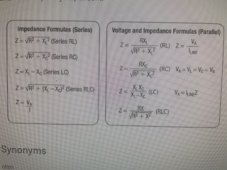vaniusha92
New Member
Hello everyone, recently i've bought from aliexpress some LiFePO batteries with the following specs: 3.2 V // 200Ah.
I would like to know if they are good, on the site in the spec section is written that the internal impedance shouldn't be more than 0.6 mili ohm.
The thing is that i don't know for real what internal impedance should have this type of battery with 3.2 V and 200Ah.
I received them, didn't charge them and tested them with impedance tester device, the numbers are 0.40 \\ 0.50 mili ohms
Could anyone tell me please if i have the good batteries or not? I'm new in this area.
I would like to know if they are good, on the site in the spec section is written that the internal impedance shouldn't be more than 0.6 mili ohm.
The thing is that i don't know for real what internal impedance should have this type of battery with 3.2 V and 200Ah.
I received them, didn't charge them and tested them with impedance tester device, the numbers are 0.40 \\ 0.50 mili ohms
Could anyone tell me please if i have the good batteries or not? I'm new in this area.
Last edited:







